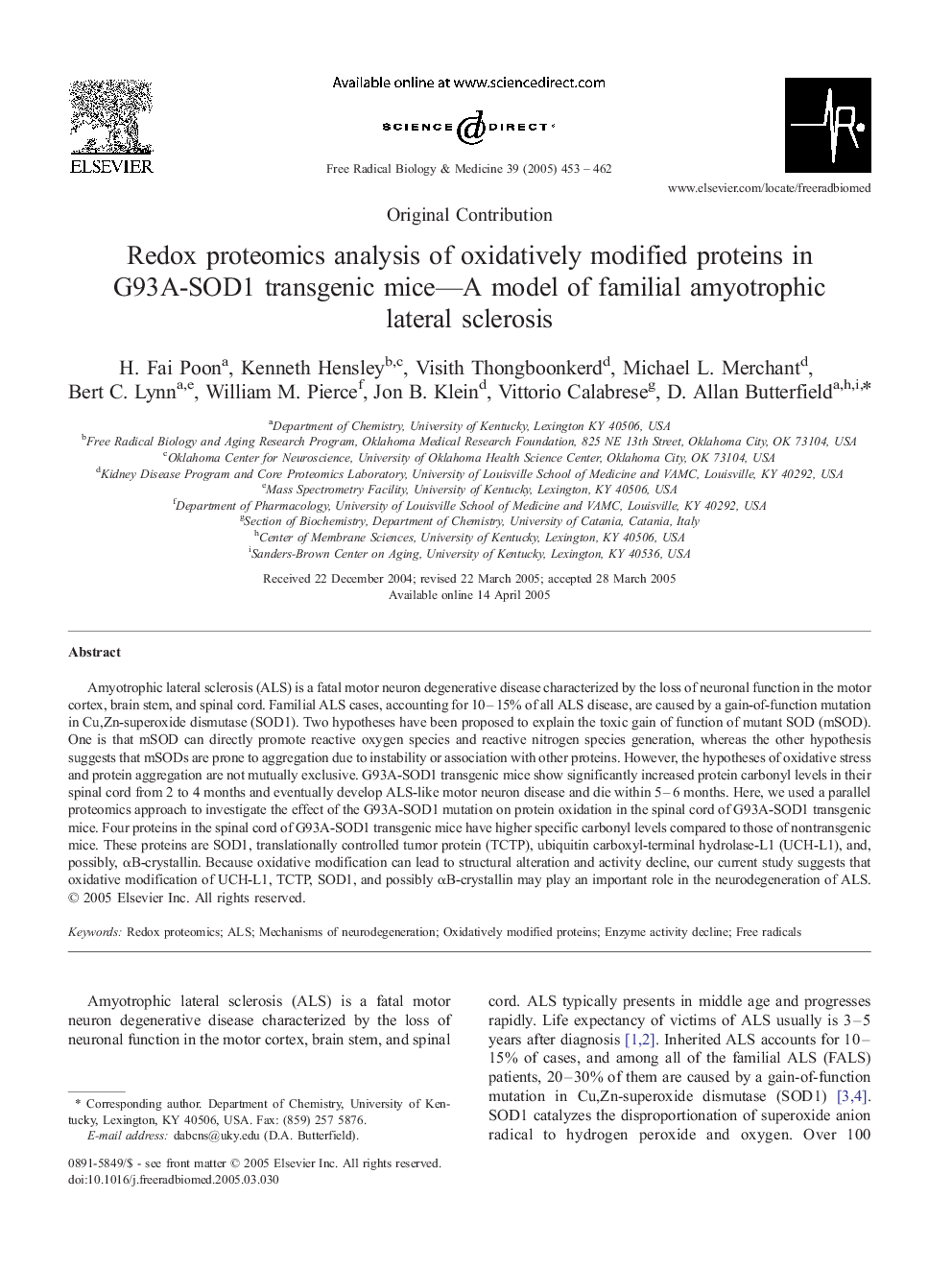| Article ID | Journal | Published Year | Pages | File Type |
|---|---|---|---|---|
| 10739116 | Free Radical Biology and Medicine | 2005 | 10 Pages |
Abstract
Amyotrophic lateral sclerosis (ALS) is a fatal motor neuron degenerative disease characterized by the loss of neuronal function in the motor cortex, brain stem, and spinal cord. Familial ALS cases, accounting for 10-15% of all ALS disease, are caused by a gain-of-function mutation in Cu,Zn-superoxide dismutase (SOD1). Two hypotheses have been proposed to explain the toxic gain of function of mutant SOD (mSOD). One is that mSOD can directly promote reactive oxygen species and reactive nitrogen species generation, whereas the other hypothesis suggests that mSODs are prone to aggregation due to instability or association with other proteins. However, the hypotheses of oxidative stress and protein aggregation are not mutually exclusive. G93A-SOD1 transgenic mice show significantly increased protein carbonyl levels in their spinal cord from 2 to 4 months and eventually develop ALS-like motor neuron disease and die within 5-6 months. Here, we used a parallel proteomics approach to investigate the effect of the G93A-SOD1 mutation on protein oxidation in the spinal cord of G93A-SOD1 transgenic mice. Four proteins in the spinal cord of G93A-SOD1 transgenic mice have higher specific carbonyl levels compared to those of nontransgenic mice. These proteins are SOD1, translationally controlled tumor protein (TCTP), ubiquitin carboxyl-terminal hydrolase-L1 (UCH-L1), and, possibly, αB-crystallin. Because oxidative modification can lead to structural alteration and activity decline, our current study suggests that oxidative modification of UCH-L1, TCTP, SOD1, and possibly αB-crystallin may play an important role in the neurodegeneration of ALS.
Related Topics
Life Sciences
Biochemistry, Genetics and Molecular Biology
Ageing
Authors
H. Fai Poon, Kenneth Hensley, Visith Thongboonkerd, Michael L. Merchant, Bert C. Lynn, William M. Pierce, Jon B. Klein, Vittorio Calabrese, D. Allan Butterfield,
